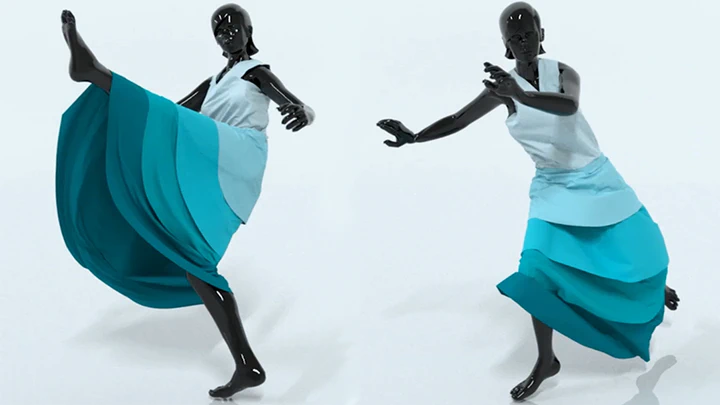Subspace-Preconditioned GPU Projective Dynamics with Contact for Cloth Simulation
Dec 12, 2023·,, ,,,·
0 min read
,,,·
0 min read
Xuan Li
Yu Fang
Lei Lan
Huamin Wang
Yin Yang
Minchen Li
Chenfanfu Jiang

Abstract
We propose an efficient cloth simulation method that combines the merits of two drastically different numerical procedures, namely the subspace integration and parallelizable iterative relaxation. We show those two methods can be organically coupled within the framework of projective dynamics (PD), where both low- and high-frequency cloth motions are effectively and efficiently computed. Our method works seamlessly with the state-of-the-art contact handling algorithm, the incremental potential contact (IPC), to offer the non-penetration guarantee of the resulting animation. Our core ingredient centers around the utilization of subspace for the expedited convergence of Jacobi-PD. This involves solving the reduced global system and smartly employing its precomputed factorization. In addition, we incorporate a time-splitting strategy to handle the frictional self-contacts. Specifically, during the PD solve, we employ a quadratic proxy to approximate the contact barrier. The prefactorized subspace system matrix is exploited in a reduced-space LBFGS. The LBFGS method starts with the reduced system matrix of the rest shape as the initial Hessian approximation, incorporating contact information into the reduced system progressively, while the full-space Jacobi iteration captures high-frequency details. Furthermore, we address penetration issues through a penetration correction step. It minimizes an incremental potential without elasticity using Newton-PCG. Our method can be efficiently executed on modern GPUs. Experiments show significant performance improvements over existing GPU solvers for high-resolution cloth simulation.
Type
Publication
SIGGRAPH Asia 2023 Conference Papers